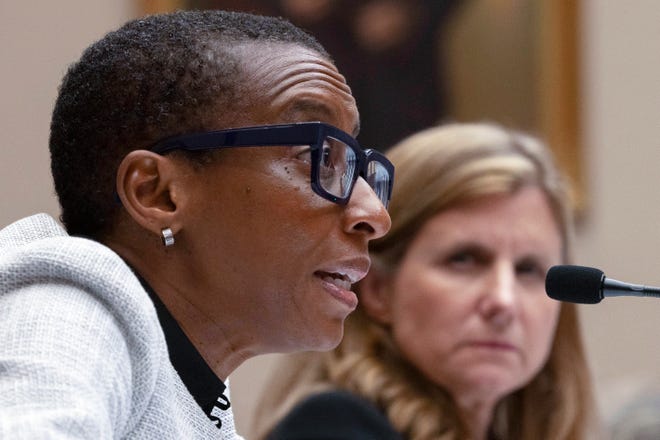During this summer, a team of students from MIT embarked on a journey to the sou …
US College Presidents Feeling a Chilling Effect Following Claudine Gay’s Example
Carlos Changemaker

Leading an elite college is currently not an ideal situation.
Last summer, Marc Tessier-Lavigne resigned as Stanford President due to issues with published research he supervised. After mishandling testimony about antisemitism, Liz Magill stepped down as President of the University of Pennsylvania.
Harvard’s Claudine Gay has now also resigned after her testimony on the same topic. As the first Black president of the college, Gay had the shortest tenure, serving for only six months.
Observers believe that other college leaders will face similar scrutiny and pressure to resign. This could deter college leaders from engaging in public discourse altogether.
“The campaign against me was about more than one university and one leader,” Gay cautioned in a New York Times op-ed published on Tuesday night. “For the opportunists driving cynicism about our institutions, no single victory or toppled leader exhausts their zeal.”
Both Gay and Magill resigned following a congressional hearing where they were questioned about their handling of student activism related to the Israel-Hamas war. Republicans asked about the endorsement of genocide by some activists. Critics leveraged the responses of the former presidents, often avoiding direct answers, to challenge diversity, equity, inclusion efforts, and selective enforcement of free speech. Gay faced additional accusations of plagiarism.
Currently, critics are focusing on Sally Kornbluth, President of the Massachusetts Institute of Technology, who also testified at the December hearing but has not resigned.
“I wouldn’t want to be a university president in the present environment,” Greg Lukianoff, President of the Foundation for Individual Rights and Expression, commented. This nonpartisan organization advocates against the suppression of free speech on college campuses. However, with 2024 being an election year, Lukianoff predicts a particularly turbulent time for leaders who hold progressive ideals. “We are likely going to see an increase in cancel culture from the right,” he added.
Claudine Gay: How allegations of plagiarism at Harvard further fuel the GOP’s attacks on higher education
Short tenures for college presidents
The position of college president is extremely challenging. This is evident in the limited amount of time the average college president remains in their role in the United States.
The American Council on Education conducts a survey of college presidents every few years. According to the most recent survey published last year, the average tenure for college presidents is 5.9 years. Most presidents do not anticipate staying for another five years. In 2016, the average tenure was 6.5 years, and ten years before that, it was 8.5 years.
Furthermore, presidents are not leaving their positions to assume similar roles at other institutions. Instead, they are transitioning to non-profit organizations or returning to faculty positions. Additionally, fewer provosts express interest in pursuing the presidency. Marc Tessier-Lavigne, the former president of Stanford University, serves as an example as he now holds a tenured biology faculty position at the esteemed institution.
The challenges brought about by the COVID-19 pandemic contribute significantly to the decreasing appeal of university leadership. Other factors also play a role.
Government intervention in higher education
Leaders argue that there is an increasing level of government interference in higher education. This includes passing new laws that restrict campus diversity, equity, and inclusion programs, as well as limitations on professors’ tenure protections and instruction on LGBTQ+ issues or race.
“American higher education’s strength lies in the fact that what is taught within and outside of the classroom is protected from direct government control and undue political influence,” Lynn Pasquerella, President of the American Association of Colleges and Universities, explained. “However, the hearings on the Hill demonstrated that we are not adhering to these principles.”
“Presidents are pulled in different directions by various stakeholders,” Pasquerella stated. “Students, faculty, staff, alumni, community members, donors, and politicians may have differing perspectives on the best course of action…regardless of what a president does, they will face criticism.”
Irene Mulvey, President of the American Association of University Professors, agrees. College presidents traditionally acted as a buffer between the campus community and the public. They were responsible for protecting the academic freedom and free speech interests of their campus while also appealing to and negotiating with funders and governing bodies.


